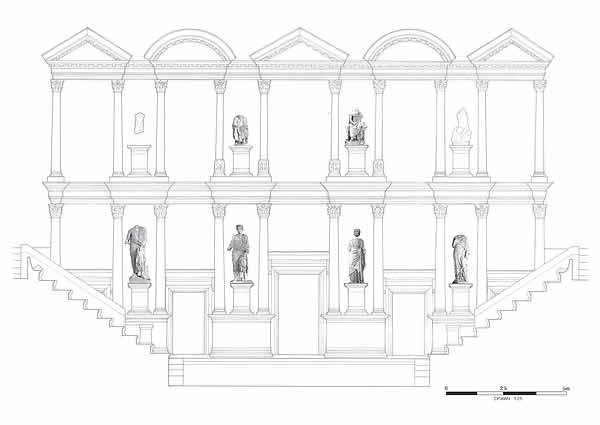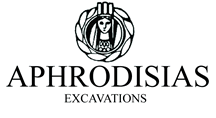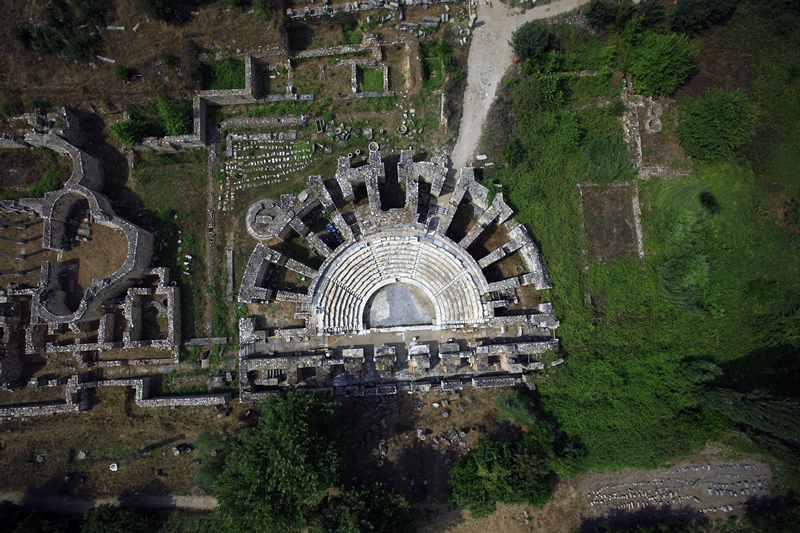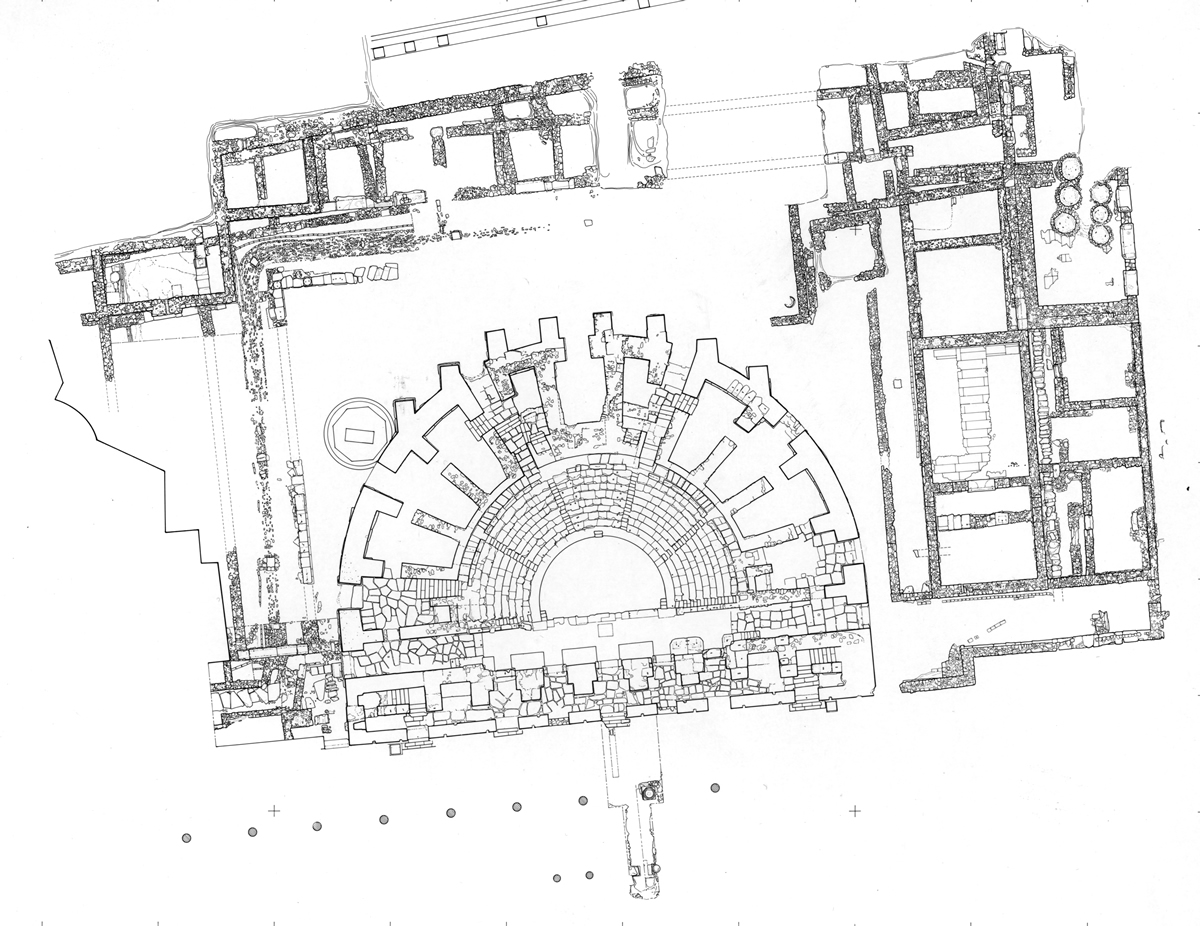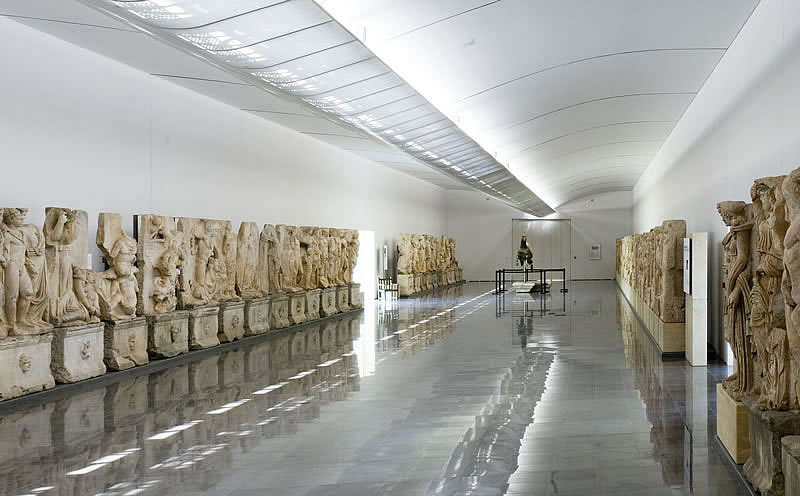Council House (Bouleuterion)
The Council House or Bouleuterion was the centre of political power in the city. It was here that the boulē (city council) met, composed of the wealthiest citizens and dominated by a few of the most powerful families. The present Council House was an elaborate new roofed structure built in the later second century by the family of Tiberius Claudius Attalos, a Roman senator, and his brother Diogenes. Its rich marble interior marked the importance of the Council as an institution and the position of this family within it: their statues dominated both the interior and the exterior.
The building was connected directly with the Agora in an urban ensemble common in Asia Minor (found also, for example, at Ephesos). It was a covered, theatre-like structure, lined with marble seating for a maximum of about 1,700 persons, with a two-storey columnar marble stage-façade. This façade faced the auditorium and carried statues of important civic benefactors between its columns.
The seating was supported by a series of radial barrel vaults. The lower part of the seating (nine rows) survives in excellent condition; of the upper part (a further twelve rows) only the walls for the supporting vaults remain. The Council House was large enough to serve, as a modern town hall does, for a variety of other purposes and entertainments (music and performance oratory, for example), as well as for meetings of the Council.
The building remained in use into late antiquity when its interior was re-modelled by the removal of the roof and two-three rows of seats and the creation of a sunken orchestra, probably for wrestling contests. The form of this re-modelling is referred to as a palaistra or ‘wrestling ground’ in a prominent fifth-century inscription on the upper moulding of the stage.
The statues of the two brothers stood on the ends of the walls that support the seating and thus framed and dominated the stage. Statues of their father, Dometeinos, and his niece Tatiana stood outside, looking towards the Agora and framing the entrances to the Council House. The statues of Dometeinos and Tatiana survive virtually complete with their bases. Eight of the statues from the stage façade inside the building also survive.
